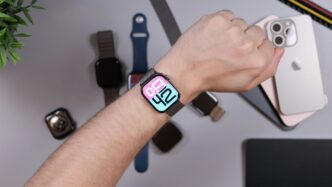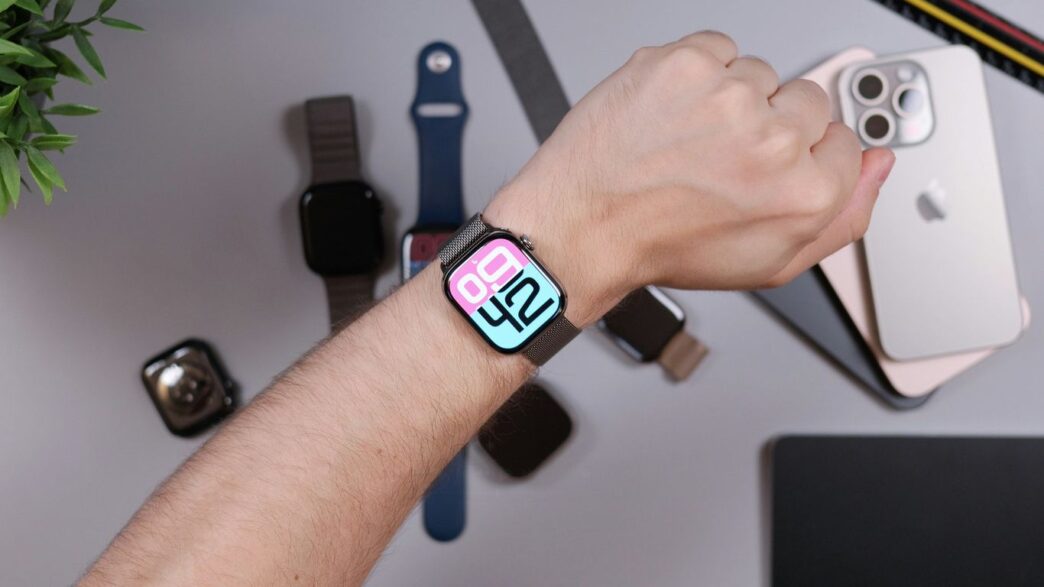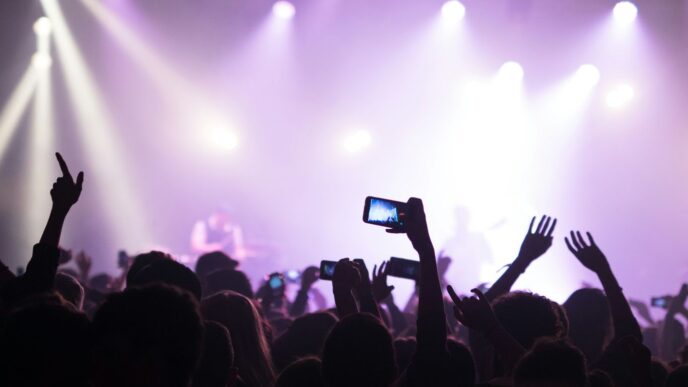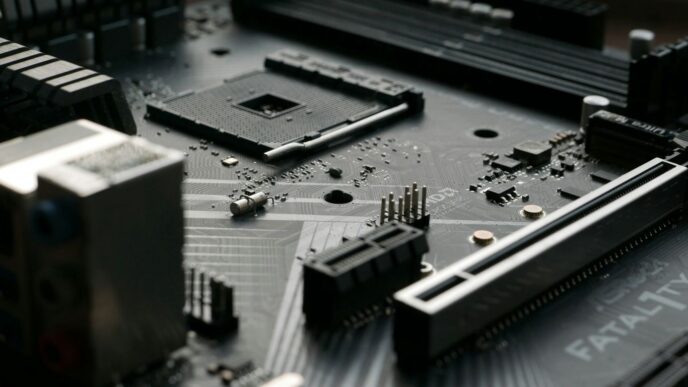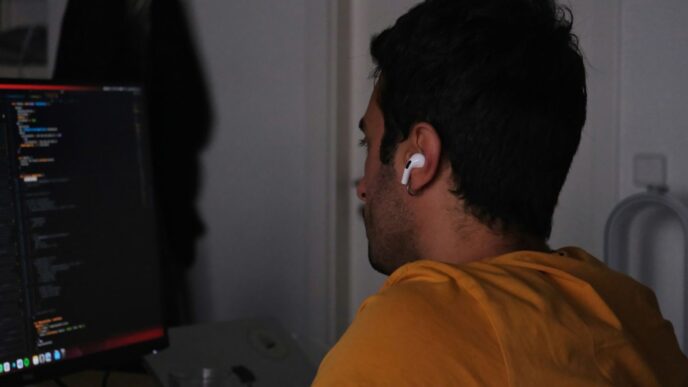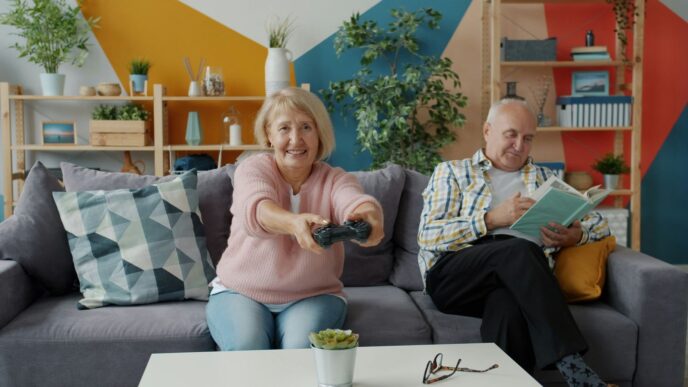So, you’re curious about the Fitbit Charge 2 release date, huh? It feels like ages ago, but this fitness tracker was a pretty big deal when it first came out. It really stepped things up from earlier models, bringing a bigger screen and more features to the table. If you’re wondering when this popular gadget hit the shelves and what made it special, let’s break it down.
Key Takeaways
- The Fitbit Charge 2 was officially launched in September 2016, marking a significant update to Fitbit’s popular Charge line.
- At its debut, the Charge 2 retailed for around $149.99, with special editions and alternative straps costing more.
- This model was a notable upgrade from the Charge HR, offering a larger display, improved heart rate monitoring with VO2 Max estimates, and connected GPS.
- While not waterproof, the Charge 2 is water-resistant and features interchangeable bands, allowing for more personalization and comfort.
- As newer models have been released, the Fitbit Charge 2 has seen price drops, making it a more affordable option for those seeking a capable fitness tracker.
Fitbit Charge 2 Release Date And Initial Pricing
The Fitbit Charge 2 hit the market in September 2016, marking a significant update to the popular Charge line. It was the first major refresh since the Charge HR, which had come out in early 2015. When it first launched, the standard Fitbit Charge 2 was priced at $149.99. This got you the tracker itself, usually with a black elastomer band.
When Was The Fitbit Charge 2 Launched?
Fitbit officially announced the Charge 2, along with the Flex 2, in August 2016, with availability starting in September of that year. It was a pretty big deal at the time, as it was the successor to the well-loved Charge HR. This new model brought a much larger screen and improved features, making it a standout in the fitness tracker world. If you’re curious about how it stacks up against other devices, you might want to check out which Fitbit model is best for you.
Original Retail Price Of The Charge 2
When the Charge 2 first came out, the original retail price was set at $149.99 for the standard version. This was pretty typical for a Fitbit device of that caliber back then. It offered a good balance of features for the cost, especially considering the upgrades it brought over its predecessor.
Special Edition And Strap Costs
Fitbit didn’t just stop at the standard model. They also offered Special Edition versions of the Charge 2. These usually came with more premium-looking straps and had a higher price tag, often around $179.95. If you wanted to customize your look even further, Fitbit also sold interchangeable bands separately. These premium leather straps, available in colors like light brown, indigo, or pink, would set you back an additional $69.95. It gave users options to personalize their tracker, but it definitely added to the overall cost if you wanted something beyond the basic band.
Fitbit Charge 2: A Significant Upgrade
The Fitbit Charge 2 really stepped things up when it came out, offering a pretty big leap forward from its predecessor, the Charge HR. It felt like Fitbit was listening to what people wanted, packing in more useful features without making it overly complicated. This device was a major step in making advanced fitness tracking more accessible to everyone.
Improvements Over The Charge HR
Compared to the Charge HR, the Charge 2 brought a lot to the table. The most obvious change was the display. It was much larger and brighter, making it easier to see your stats at a glance, even when you were on the move. Plus, it was a touchscreen, which was a first for the Charge line and made navigating the menus feel more intuitive. While the Charge HR was good, the Charge 2 felt like a more complete package.
Key Features Of The Charge 2
Fitbit really loaded the Charge 2 with features that made it stand out. Here are some of the highlights:
- Larger, Brighter Display: Easier to read your stats, notifications, and workout summaries.
- VO2 Max Estimation: This gave users a better idea of their cardiovascular fitness level.
- Guided Breathing Sessions: Helped users relax and manage stress right from their wrist.
- Multi-Sport Tracking: Allowed for more specific tracking of different activities like running, cycling, and weights.
- Interchangeable Bands: You could easily swap out the bands to change the look of the tracker.
Design And Display Enhancements
Fitbit definitely put some thought into the design of the Charge 2. It was a bit thicker than the Charge HR, but that extra size allowed for that much bigger screen. The screen itself was an OLED display, which meant everything looked crisp and clear. While it wasn’t a color screen, it was a big improvement for readability. The bands were also designed to be easily swapped out, giving users a lot of freedom to customize their look. This made the Charge 2 feel less like just a fitness gadget and more like a piece of everyday wear, something you could even pair with different outfits. It was a solid step up, making it a more appealing option for many users looking to improve their fitness tracking capabilities.
Fitbit Charge 2 Features And Functionality
Heart Rate Monitoring And VO2 Max
The Fitbit Charge 2 really stepped things up with its heart rate tracking. It uses an optical sensor right on the back of the device to keep tabs on your pulse. This isn’t just for seeing your heart rate during a workout, though. It uses this data to give you an estimate of your VO2 Max. If you’re not familiar, VO2 Max is basically a measure of how much oxygen your body can use when you’re really pushing yourself during exercise. A higher VO2 Max generally means you’re in better shape. The Charge 2 shows you this number, which can be pretty motivating to see if you’re improving over time. It also uses your heart rate data for those "Relax" sessions.
Sleep Tracking And Relax Sessions
Fitbit has always been good at tracking sleep, and the Charge 2 continued that trend. It automatically figures out when you fall asleep and when you wake up, and then breaks down your night into light, deep, and REM sleep stages. You can see how much time you spent in each stage, which helps you understand your sleep quality. Beyond sleep, the Charge 2 introduced guided breathing exercises, called "Relax Sessions." These are short, usually two-minute sessions where the tracker guides you through deep breaths based on your heart rate. It’s a neat little feature for trying to de-stress during a busy day.
Connected GPS And Notifications
Now, the Charge 2 doesn’t have its own built-in GPS, which was a bit of a bummer for some runners who wanted to track their routes without their phone. However, it does have what Fitbit calls "Connected GPS." This means you can pair it with your smartphone, and it’ll use your phone’s GPS to map your runs, walks, or bike rides. You’ll see your pace and distance right on the tracker and in the app. It also gives you notifications from your phone, like calls, texts, and calendar alerts. You won’t get a ton of detail, and you can’t really respond to them, but it’s handy for just glancing down to see if something important is happening without pulling out your phone.
Design And Customization Options
Interchangeable Bands For Style
The Fitbit Charge 2 really let you make it your own. Unlike its predecessor, the Charge HR, the Charge 2 came with a neat trick: swappable bands. This was a pretty big deal for a fitness tracker back then. It meant you weren’t stuck with the same look day in and day out. You could switch things up depending on your outfit or just your mood. Fitbit offered a range of official bands in different colors and materials, like classic silicone, stylish leather, and even some fancier woven options. Plus, the aftermarket quickly caught on, so there were tons of third-party bands available, giving you even more choices. It was a simple click-and-release system, making it super easy to swap them out without any tools. This ability to customize the look was a major selling point for many users.
Material Quality And Comfort
When it came to the materials, Fitbit generally did a good job with the Charge 2. The main tracker unit itself had a sleek, matte finish that felt pretty durable. The standard silicone bands were comfortable enough for all-day wear, even during workouts. They were flexible and didn’t feel too plasticky. If you opted for the leather bands, they added a touch of sophistication, making the Charge 2 look less like a pure sports gadget and more like a regular watch. The woven bands were also a popular choice, offering a softer feel and a different texture. Overall, the device felt well-built and designed for comfort, which is important when you’re wearing something 24/7.
Water Resistance Limitations
Now, here’s where the Charge 2 wasn’t quite perfect. It was splash-proof and sweat-proof, meaning you didn’t have to worry about it if you got caught in a light rain or worked up a serious sweat during a run. You could even wash your hands with it on. However, it wasn’t waterproof. You definitely couldn’t take it swimming or wear it in the shower. Submerging it could damage the electronics. This was a bit of a step back from some other trackers on the market at the time, and it’s something potential buyers needed to be aware of. If swimming was a big part of your fitness routine, the Charge 2 probably wasn’t the best fit for that specific activity.
Fitbit Charge 2 Versus Other Trackers
When you’re looking at fitness trackers, it’s easy to get lost in all the options. Fitbit’s Charge 2 definitely stood out when it came out, but how does it stack up against its own siblings and other brands? Let’s break it down.
Comparison With Charge HR
The Charge 2 was a pretty big step up from its predecessor, the Charge HR. Think of it like going from a flip phone to an early smartphone. The biggest change? That much larger, brighter screen. It made seeing your stats, notifications, and even just the time so much easier. Plus, the Charge 2 brought in new features like guided breathing sessions and VO2 Max estimates, which the HR just didn’t have. While the HR was good for basic tracking, the Charge 2 offered a more detailed look at your fitness.
Comparison With Flex 2
Fitbit released the Flex 2 around the same time, and they were aimed at different people. The Flex 2 was all about being super slim and discreet, even swim-proof, which the Charge 2 definitely wasn’t. If you wanted something you could wear anywhere, even in the shower or pool, and didn’t need a big screen, the Flex 2 was the choice. The Charge 2, on the other hand, was for someone who wanted more data front and center and didn’t mind a slightly bulkier device. It was more about active fitness tracking, while the Flex 2 was more about everyday wear and water activities.
Comparison With Other Brands
Fitbit’s Charge 2 was a solid contender, but other companies were also making moves. Garmin, for instance, had trackers like the Vivosmart HR that offered similar features, sometimes at a better price, especially when on sale. Some people found Garmin’s devices to be a bit more capable overall, even a year after the Charge 2’s release. Polar also had options like the A360. The main thing to consider with these brands is what ecosystem you’re already in. If all your friends are on Fitbit and you like the social features, sticking with Fitbit makes sense. If you’re already invested in Garmin’s cycling computers, for example, staying within that brand might give you a more connected experience. Ultimately, if you don’t have any brand loyalty, the Charge 2 was a good option, but it wasn’t the only game in town, and competitors were often pushing new features faster.
Evolution Of The Fitbit Charge Line

The Recalled Fitbit Force
Fitbit’s journey into the wristband tracker world wasn’t always smooth sailing. Back in late 2013, they released the Fitbit Force. It was pretty neat for its time, tracking steps, distance, calories, and even sleep, with a little OLED screen to show you everything. It even had a silent alarm. But then, things got a bit bumpy. By early 2014, people started reporting skin irritation from wearing it. Fitbit looked into it and figured it was likely an allergic reaction to the materials or adhesives used. This led to a recall in February 2014, officially announced by the Consumer Product Safety Commission. It was a tough moment, with reports of thousands of injuries. The Force was no longer sold, and Fitbit had to regroup.
The Fitbit Charge HR Predecessor
After the Force incident, Fitbit needed to make a comeback. They introduced the Fitbit Charge in late 2014, aiming to replace the Force. This was followed closely by the Charge HR in October 2014, which hit the market in early 2015. The Charge HR was a big step because it added a heart rate monitor, something many users wanted. To make room for the heart rate sensor, the battery life was a bit shorter than the original Charge, going from about a week to around five days. The band design also changed slightly to ensure a snug fit for accurate heart rate readings, resembling a traditional watch strap more than the snap-on style of the original Charge.
Fitbit’s Focus On Fitness Trackers
Looking at the Charge line, you can see Fitbit’s dedication to fitness tracking. The Charge 2, which came out in 2016, was a significant upgrade from the Charge HR. It brought a bigger screen, interchangeable bands for personalization, and improved features like connected GPS and guided breathing sessions. This showed Fitbit was listening to user feedback and constantly refining its products. They kept iterating, with the Charge 3 arriving in 2018, bringing a swim-proof design and SpO2 monitoring (though that feature took a while to activate). Then came the Charge 4 in 2020 with built-in GPS and Spotify controls. Each iteration built upon the last, showing a clear path of development focused on giving users more insights into their health and fitness, all within that familiar wristband form factor.
Current Availability And Value
Price Drops Since Launch
When the Fitbit Charge 2 first came out, it was priced at $149.99. That was pretty standard for a feature-rich fitness tracker back then. Now, though, it’s a different story. You can often find it for much less, especially if you’re not looking for the absolute latest model. It’s a good sign that older tech can still be a solid buy if you’re on a budget. The Charge 2 has seen significant price reductions since its initial release.
Fitbit Charge 2 In Sales Events
Keep an eye out during major shopping holidays. You know, like Black Friday, Cyber Monday, or even Amazon Prime Day. These are prime times when retailers slash prices on electronics, and the Charge 2 is no exception. You might snag it for a steal. It’s worth checking out deals on affordable Fitbit activity trackers during these periods.
Continued Relevance Of The Charge 2
Even with newer models out, the Charge 2 still holds its own. It tracks steps, heart rate, sleep, and connects to your phone for notifications. For a lot of people, that’s still plenty. If you don’t need all the bells and whistles of the newest gadgets, the Charge 2 offers a great balance of features and affordability. It’s a reliable choice for basic fitness tracking.
So, When Did the Fitbit Charge 2 Actually Come Out?
Alright, so we’ve talked a lot about what the Fitbit Charge 2 can do and how it stacks up. But circling back to our main question, this popular fitness tracker officially hit the scene in September 2016. It was a pretty big deal back then, stepping up from the earlier Charge HR model. Even though newer Fitbits are out now, the Charge 2 still holds its own, especially if you can find it at a good price. It really made fitness tracking more accessible with its bigger screen and useful features, making it a solid choice for many people looking to keep tabs on their health.
Frequently Asked Questions
When did the Fitbit Charge 2 come out?
The Fitbit Charge 2 was released in September 2016. It was a big step up from earlier models, offering more features and a larger screen.
How much did the Fitbit Charge 2 cost when it first came out?
When it first launched, the Fitbit Charge 2 was priced around $149.99 for the standard version. Special editions with nicer bands cost a bit more, around $179.95.
Can I change the bands on the Fitbit Charge 2?
Yes, absolutely! The Fitbit Charge 2 has bands that you can easily swap out. This lets you change the look of your tracker to match your style or outfit. There were many options available, from colorful rubber bands to fancier leather ones.
Does the Fitbit Charge 2 have GPS?
The Fitbit Charge 2 does not have its own built-in GPS. However, it can connect to your smartphone’s GPS to track your runs or walks. This is called ‘Connected GPS’.
Is the Fitbit Charge 2 waterproof?
The Fitbit Charge 2 is water-resistant, meaning it can handle getting splashed with water, like during hand washing or light rain. However, it’s not waterproof, so you can’t wear it for swimming or showering.
Is the Fitbit Charge 2 still a good fitness tracker to buy now?
Even though newer Fitbit models are out, the Charge 2 can still be a good choice, especially if you find it at a lower price. It offers solid fitness tracking features like heart rate monitoring, sleep tracking, and step counting, along with a nice big screen to see your stats.

